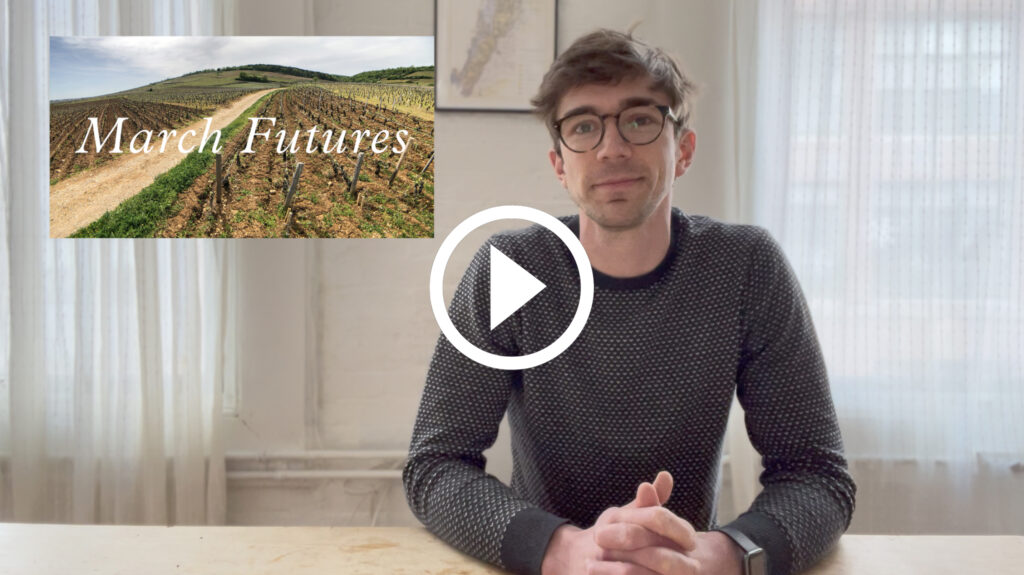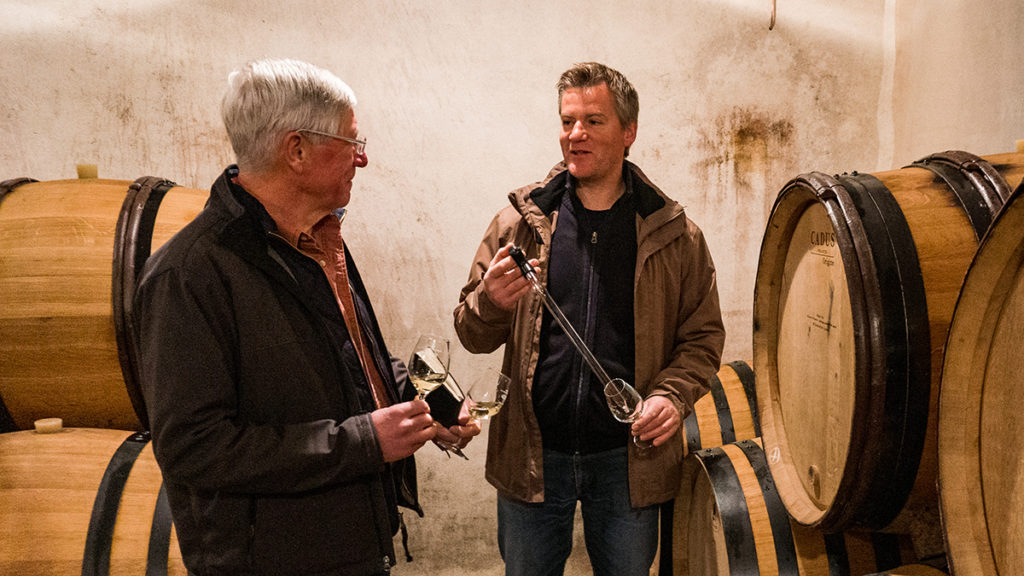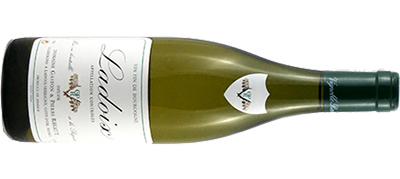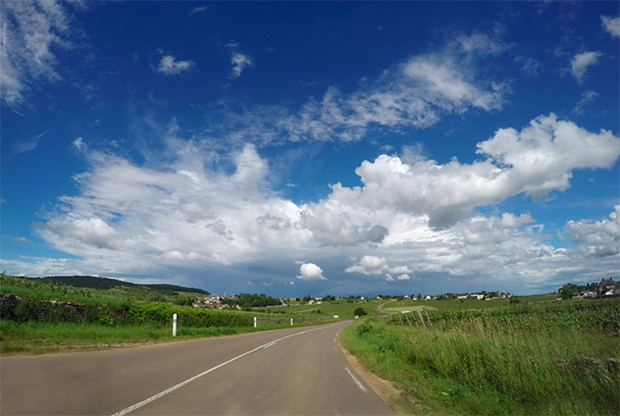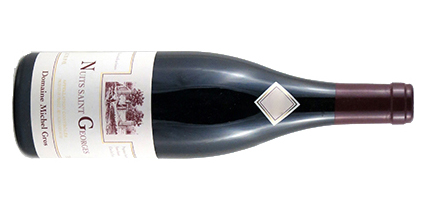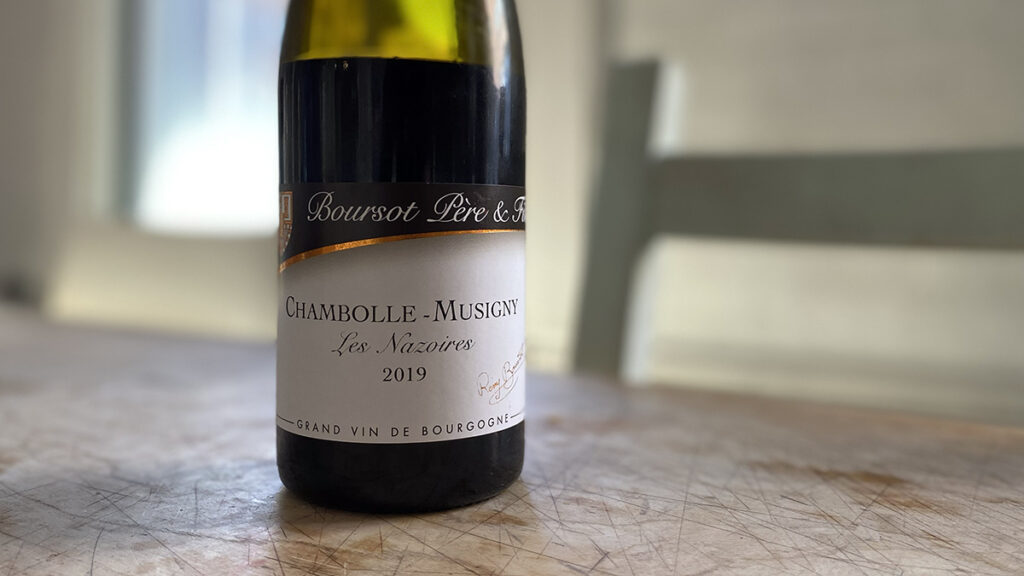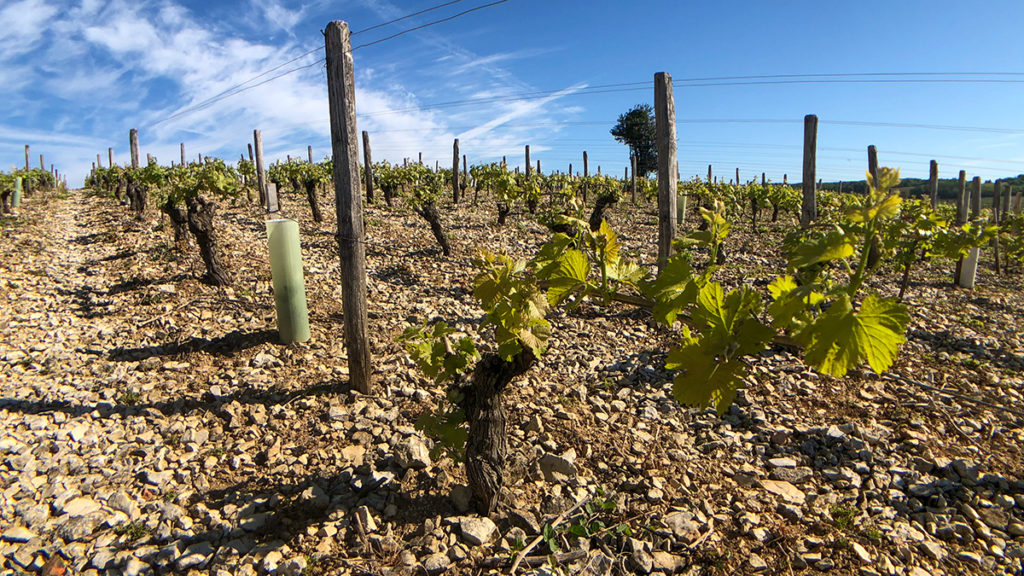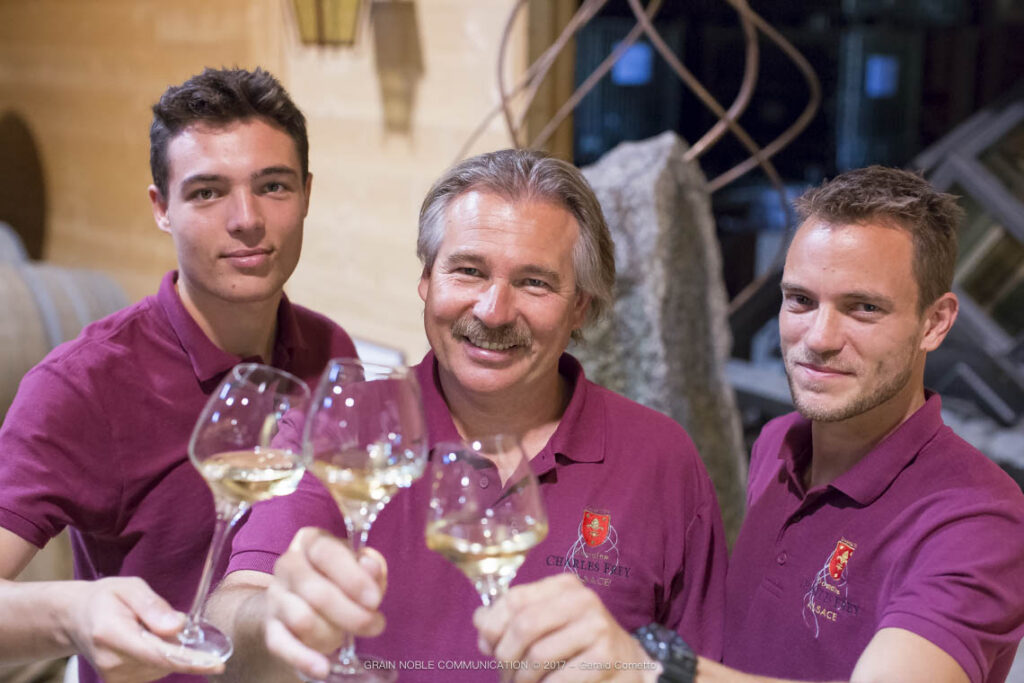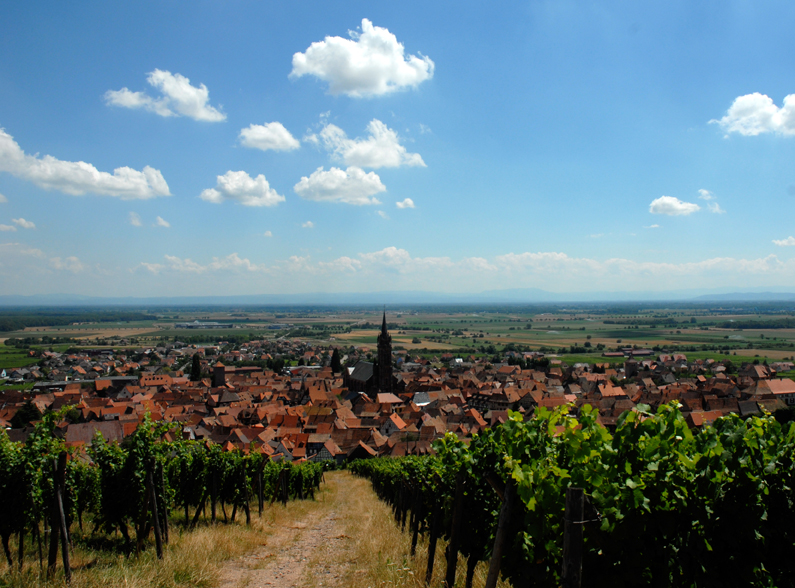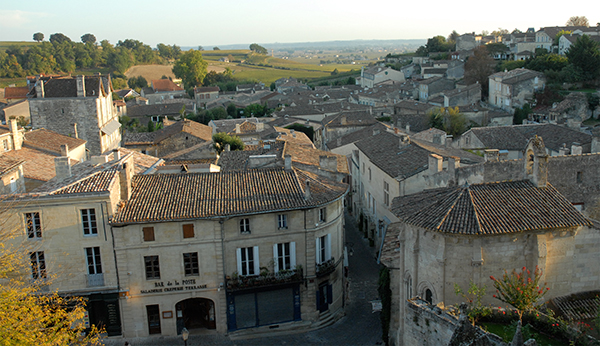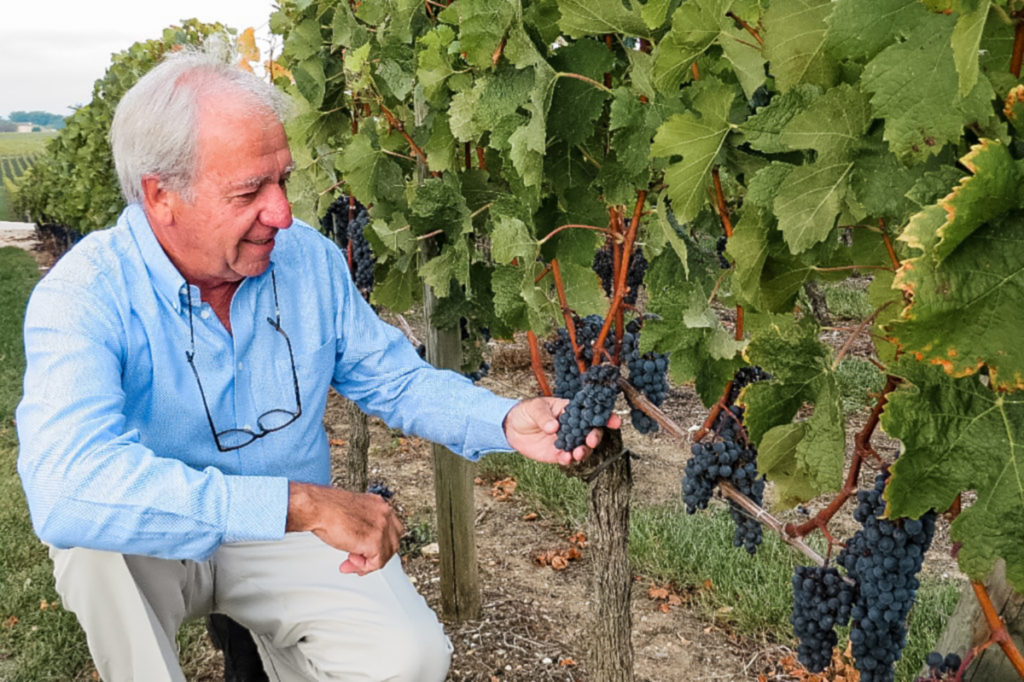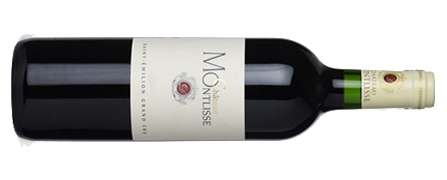Spring will be arriving in France soon, and with any luck so will we. This week the French government announced a further loosening of Covid rules ahead of the upcoming presidential election; and so our plans for a visit at the end of this month remain on track. It will be good to get back to familiar faces in familiar cellars, tasting the wines where they are made and enjoying the local cuisine. Vignerons are more nervous this time of the year than they used to be. Spring frost has always been a risk, particularly in Burgundy, but ironically warmer weather has increased it. The vines push their shoots earlier in warmer weather, and the earlier bud break puts the fragile shoots at greater risk for early frosts. We invite you to keep your fingers crossed with us (for any number of reasons) in the coming weeks. Meanwhile, we invite you to consider this Futures offering. As usual, our March offering ranges widely. There’s plenty here to get you ready for warmer weather — a trio of rosé from the Loire and Rhône valleys, along with reds and whites from Sancerre and from the Alsace. There’s also plenty to consider from Burgundy, including some excellent white from the Hill of Corton in the northern end of the Côte de Beaune. And because both the 2020 and 2021 harvests were so small across Burgundy, we have made a special effort this March to go back for additional 2019 reds in order to take advantage of current pricing and availability. We hope there will be something here for everyone. If anything is of interest, please place your orders in case or half-case lots by the ORDER DEADLINE OF MARCH 20, 2022. Watch our 3 minute video preview of the March Futures lineup: JUMP TO SECTION
Ravaut
Prunier
Encores
Garenne
Frey
Tunnel
Rosés
Ramafort
Dauriac
March Futures
Order Deadline: 3/20
Domaine Ravaut
Ladoix, Burgundy
The 2020 vintage was the third in a string of hot growing seasons in Burgundy, and one that produced the earliest harvest on record. August temperatures pushed well past 100F, and a lack of rainfall stressed vines as much as in recent memory. Hot grapes are prone to spoilage, and many domaines began harvesting in the early morning and called off their afternoon sessions to avoid the heat. If this sounds to you like a recipe for New World-y chardonnays with buttery mouthfeels and no freshness, you’re not alone – growers at harvest time worried over an expected loss of signature Burgundian balance. But as it turns out, someone forgot to tell the grapes. No one is quite sure why, but the 2020 white Burgundies are simply terrific. “The 2020 white Burgundies clearly number among the very best produced in the last two decades,” writes William Kelley. “An almost universally successful vintage for the white wines,” concludes Jasper Morris. Morris cites the concentrated acid from hydric stress for the wines’ freshness, and Kelley notes the unusually high levels of tartaric (rather than malic) acid found in the wines. Whatever the cause, we can confirm that nearly every 2020 white Burgundy we’ve tasted has been thrillingly good. And the 2020 white lineup from Domaine Ravaut is no exception. Vincent Ravaut’s small domaine lies at the foot of the great hill of Corton, at the junction between the Côte de Nuits and the Côte de Beaune. His Grand Crus from Corton-Charlemagne (blanc) and Corton-Bressandes (rouge) have always been terrific, and recent years have seen some of their best performances. But his regional and village level wines have benefited particularly from the extra warmth. Ravaut’s style of low oak, fine minerality, and focused freshness now plays host to abundant ripeness, and the resulting wines are exciting and delightful. We begin with Ravaut’s excellent Aligoté, a grape whose star has risen dramatically amid the warming trend. The 2020 Aligoté shows precise minerality and focused green apple notes in the nose. It sees no oak, and channels its concentrated fruit into a straightforward, refreshing package. Corton-Charlemagne this is not, but at $16.25 a bottle it’s a terrific value. Ravaut’s 2020 Bourgogne blanc is even better (though there’s not much to go around). The nose is floral and perfumed, with a complexity of bouquet that calls to mind a village level wine. Look for lemon pulp and chalk in the nose, with a lovely, dry waxy texture and enough freshness to support the concentration. This will drink well immediately, and certainly won’t last long in our cellar. At the village level, Ravaut makes a Ladoix blanc from the Hautes-Mourottes vineyard, which borders the Grand Cru Corton-Charlemagne at its northern end. We found this always tasty wine particularly good in 2020 – the nose shows tropical fruit with coconut and spice. There’s excellent intensity and a serious flavor profile, with low sucrocité, dry lemon fruit and plenty of freshness. This is concentrated and impressive – it should drink well after 6 months or so, and be singing by Christmas. Between the Ladoix village and the Grand Cru Corton-Charlemagne (both in geography and classification) lies the Ladoix blanc Premier Cru from “Basses Maurottes.” It’s a noticeable jump in complexity and structure from the village Ladoix, and one that will take time to reward the additional investment. But all the elements of a great white Burgundy are there – careful oak, tons of concentration, and soaring aromatics of gardenia, pear, almond, and toast. It may not be a bargain, but at nearly half the price of the Grand Cru it provides real value. Finally, Ravaut’s Corton-Charlemagne Grand Cru. It’s no mistake that this vineyard has been famous for a thousand years – the wine it produces is magnificent. And in 2020, Ravaut’s lives up to its considerable billing. The nose is gorgeous, with a viognier-like perfume of mango, coconut, and yellow orchard fruit. The mouth is young, very sophisticated, and impossibly long. This is as good a vintage of this wine as we’ve had, and if you have the budget and cellar space to forget about it for a few years, we recommend it strongly. Quantities are limited. (Ravaut’s 2020 reds will be offered later this year.)
Domaine Michel Prunier
Auxey-Duresses, Burgundy
The side valleys of the Côte de Beaune (Pernand/Savigny, Auxey/St-Romain, & St-Aubin) have long produced undervalued Burgundy – accessible wines with friendly pricing and early drinking windows. And while the surging tide of prices has begun to creep even into these corners, they remain excellent sources for value. Tucked away in the picturesque valley between Meursault and Volnay, the charming town of Auxey-Duresses is home to Michel Prunier and his daughter Estelle. They’re among the brightest names in this humble town, and a favorite of Vinous writer Neal Martin. Martin has visited for over two decades, and characterizes them as an “old-school producer” with “premier crus worth hunting down, as they represent good value.” He goes on to note that the 2019s of both colors “might not oblige superlatives, yet they represent honest and true reflections of their terroirs…considering that these continue to be sold at very reasonable prices, they are certainly worth looking out for.” We’re pleased to offer a white and three reds, all from 2019. The village-level Auxey-Duresses blanc has been a reader favorite in recent years, and it’s not hard to see why: it’s easy, accessible, low oak white Burgundy with excellent balance. Martin found “a smooth and quite honeyed opening, yet there is acidity here to keep everything in balance.” He concluded “fine early drinking white Burgundy.” We agree, and think this provides great value under $40/bot Futures. In red, we have three suggestions – the first in the Prunier hometown of Auxey, and two others from plots of more renown. Prunier Auxey-Duresses premier cru rouge comes from three plots, all on the south-facing side of the valley: Grands Champs, Climat du Val, and Bas du Duresses. The resulting wine is terrific, with masculine red fruits and a pleasant bright earthiness. The Pruniers include 50% whole clusters in this cuvé, giving the mouthfeel an excellent backbone behind the lush red fruit. Martin awarded 91-93 points and called it “excellent,” finding “very cohesive and gentle grip” from the stems, and concluding “this is a fine Auxey-Duresses.” The Pruniers also farm two premier cru plots on the main stretch of Côte d’Or vineyards, one in Beaune and one in Volnay. Their Beaune 1er cru comes from Sizies, and exhibits Beaune’s classically middleweight expression of Pinot Noir. The nose is lovely and floral, with nice minerality and a bit of toast. Martin found “a concentrated bouquet with strong rose petal and violet,” and also noted the oak. We’d counsel hanging onto this for a few years so the oak can become a little better acquainted with the fruit, but with some patience this will be an excellent Beaune red. Finally, Prunier’s finest vineyard is Volnay 1er cru “Caillerets,” generally regarded as the best plot in the Grand Cru-less town. As with the Beaune this will need time for the oak to settle in, but if past performance is an indication this should be a lovely, ethereal, old-school red Burgundy in a few years. Martin awarded 90-92, finding a “well defined bouquet” with “a fine bead of acidity” on the palate, concluding “impressive density…good long term potential.” This is very 2019 – perfectly formed and tightly coiled. Given time this should provide excellent return on investment.
Côte de Nuits Encores
Amiot, Gros, Boursot
Given the coming price increases and limited quantity of the 2020 red Burugndies, we’ve been asking around for back vintages at our favorite Côte de Nuits domaines. There’s not much out there, but this section is a hodgepodge of what we’ve been able to find: Gevrey and Morey from Amiot, Hautes-Côtes and Nuits from Gros, and Chambolle from Boursot. Regular readers may have noticed our post on the remaining 2019s from Pierre Amiot last Sunday. Both Morey-St-Denis 1er crus sold out before the day was out, so neither Charmes nor Millandes in 750s is included here. But we have three other ideas from Amiot, all in similarly small quantities, and we’ve also been able to add some back vintages from Michel Gros.. In 750s at Amiot, we’ve been offered several cases of the 2019 Gevrey-Chambertin “les Combottes,” a supremely well-located premier cru vineyard surrounded by such luminaries as Clos de la Roche, Latricières-Chambertin, Mazoyeres-Chambertin, and others. An exceptional plot in a superb year, this is an excellent candidate for the back of the cellar. Burghound awarded 91-93 points calling it “lovely” and “outstanding” along with “excellent volume” and “beguiling texture.” As with most 2019s this is dense, intense, and tightly packed – patience will be required but handsomely rewarded. For (somewhat) earlier enjoyment, consider Amiot’s Morey-St-Denis 1er cru “Les Millandes.” The 750s sold out last Sunday, but we have a few cases of magnums. This wine comes from the family’s tiny plot of 50 year old vines in stony soils scattered with round rocks called “têtes de loups” (wolf heads). Millandes is always one of Amiot’s most precise, sophisticated cuvées, and though the 2019 is riper and more muscular than usual, it retains its buttoned up, polished character. The nose is multi-layered, a blend of oak and fruit. Burghound awarded 90-92 points and praised its “brooding liqueur-like aromas of plum, dark currant, earth and a whiff of Asian-style tea.” The wine also won a “Tastevinage” from the Chevaliers du Tastevin, the Burgundy trade group that blind tastes through the vintage each year and singles out particularly noteworthy wines. Finally, Amiot’s best premier cru plot in Morey-St-Denis is “Ruchots,” a vineyard just across the road from the famous Grand Cru Clos de Tart. We’ve bought Amiot’s last 2019 magnums of this wine (the 750s sold out long ago). It’s generally accepted as the finest premier cru in the town, and a taste leaves no doubt why. Amiot’s 2019 Ruchots is in a class of its own, showing gorgeous berries, violets, and spices, with excellent intensity and depth. Burghound awarded 90-93, calling it “outstanding” and “delicious” with “fine volume” and “fine length.” At Michel Gros, we have three regional ideas, and one village level 2018. Michel’s wines from the Hautes-Côtes de Nuits have fared beautifully in recent hot vintages – they’re terrific values from true Burgundian terroir that until recently was often on the margins of ripeness. First the Hautes-Côtes de Nuits from 2019 – a lovely, dense wine with dark red fruits and a nice mineral line. There’s lots of stuffing here, so no rush at all to drink this wine. Burghound found it “outstanding” finding “refined texture” with “solid depth” and “pure, racy, lightly stony flavors.” Entry level red Burgundy is seldom better than this. We’re also suggesting an Hautes-Côtes wines from 2017, a vintage with an entirely different character from 2019. The 2017s have less intensity and less tannin than their counterparts in 2019, and the resulting wines are more approachable. Notwithstanding the vintage, the Hautes-Côtes “Au Vallon” 2017 is only beginning to enter its drinking window, and we expect it to provide excellent weeknight drinking for another 2-4 years. The wine is bright and fruit forward, with a sunny character and pleasant mineral chalkiness. It drinks well early and in 2017 is particularly floral and lovely. Master of Wine Sarah Marsh called it “fresh and peppy.” Finally, the only village wine of any vintage still available at Gros is the 2018 Nuits-St-Georges. We offer it both for the same reason someone climbs Everest (“because it’s there”), but also because the bottle we opened last week was delicious. This is from Gros’s plots on the northern side of the town, near the Nuits-Vosne border. This wine is often less bold and masculine than Gros’s other Nuits cuvée from the center of the appellation, but in this vintage the wine is unmistakably a Nuits-St-Georges. The nose is lovely and dark, bursting with dark blue fruits and a pleasantly rugged earthiness. The mouth is ripe (classically 2018) but not the slightest bit flabby, and shows an untamed essence that calls to mind the charming wildness of rural France – picture something between a medieval castle and a cozy farmhouse fireplace. This isn’t the most complex or most refined of Gros’s cuvées, but it’s perfectly crafted, and an excellent value for the price. The Boursot family has made wine in Chambolle-Musigny since the 16th century, but have only started bottling their own wine in the last few decades. Their portfolio of terroirs is the stuff of winemaker dreams — village and premier cru plots around Chambolle-Musigny, including a large plot of old vines in “Les Fuées,” one of the town’s top plots. Their star is on the rise, and as they gain winemaking experience the new generation has begun to gain critical acclaim. Neal Martin calls their wines “superb” and finds “a foundation for a promising future.” We’re revisiting two of their excellent 2019s still available, and offering a terrific 2016 as well. At the village level, the 2019 Chambolle-Musigny “Nazoires” is first rate Chambolle. The nose offers a pleasant mix of ripe fruit and muted oak. The palate has just the right shape — silky with just a hint of structure, and it persists well through the finish. It shows the gorgeous texture and balance for which the vintage has become known. Excellent village level Chambolle in a terrific year. We were excited to find two vintages still available of Boursot’s top cuvée, Chambolle-Musigny 1er cru “les Fuées,” along with Amoureuses the most celebrated of Chambolle’s premier crus. The 2019 vintage is still quite young, but all the elements of a great vintage are there: deep intensity, good supporting acidity, and supple tannins. Vinous’s Neal Martin gave 91-93 points, finding “fine length” and a “refined bouquet that displays good terroir expression.” However much you have of this, in a few years we bet you’ll wish you had more. 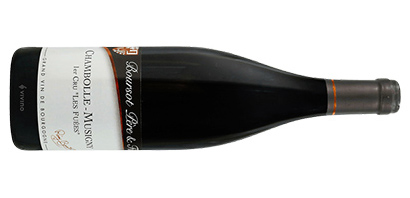 For more immediate enjoyment, there’s Boursot’s Chambolle-Musigny 1er “Fuées” from 2016. This often overlooked vintage produced wines with real class and sleek, beautifully balanced palates. This has many happy years ahead of it, but it is showing beautifully right now, with a lovely nose of plums and violets and excellent balance. Martin also loved this wine, calling it “superb Chambolle-Musigny with great tension and a long, cassis-tinged finish,” concluding simply, “Excellent.”
For more immediate enjoyment, there’s Boursot’s Chambolle-Musigny 1er “Fuées” from 2016. This often overlooked vintage produced wines with real class and sleek, beautifully balanced palates. This has many happy years ahead of it, but it is showing beautifully right now, with a lovely nose of plums and violets and excellent balance. Martin also loved this wine, calling it “superb Chambolle-Musigny with great tension and a long, cassis-tinged finish,” concluding simply, “Excellent.”
ENCORES Amiot Gevrey-Chambertin 1er Combottes 2019: $1095 Gros Hautes-Côtes de Nuits rouge 2019: $325 Boursot Chambolle-Musigny 2019: $795
(case prices)
Amiot Morey-St-Denis 1er “Millandes” 2019 (6x 1.5L): $795
Amiot Morey-St-Denis 1er “Ruchots” 2019 (6x 1.5L): $895
Gros Hautes-Côtes “Au Vallon” 2019: $350
Gros Nuits-St-Georges 2018: $695
Boursot Chambolle-Musigny 1er cru “Fuées” 2019: $1,195
Boursot Chambolle-Musigny 1er cru “Fuées” 2016: $1,195
Domaine de la Garenne
Sancerre, Loire
Sauvignon blanc (just “Sauvignon” to the French) is widely grown around the world, with good examples from New Zealand, Australia and the US, among other countries; but the big dog for this grape has always been Sancerre. There is something about the pure, clean, and chiseled character of a bone dry Sancerre that has made it the world’s reference point for Sauvignon. Sancerre looks the part, too — the town perches atop a high hill along the upper Loire, and its vineyards spread out on all sides as they descend toward the river and its tributaries. Our source in Sancerre is the Domaine de la Garenne. They make three distinct cuvées of white, all 100% Sauvignon. The regular Sancerre 2021 offers a nicely ripe nose of grapefruit and a hint of the freshness expected on the palate. In the mouth there is exactly that: a pleasant roundness supported by a lively underpinning. Its freshness is noteworthy across the palate and contributes to a finish with very good length. Perhaps Sancerre’s most famous terroir is the valley that runs up to the hamlet of Chavignol next door (yes, that’s the place whose goat cheese is “Crottin de Chavignol,” a beautiful match for the wine). Garenne owns a particularly favored parcel of clay-limestone soil in this corridor: “Les Bouffants,” right next to the fabled “Monts Damnées.” The domaine’s Sancerre “Les Bouffants” 2021 definitely shows its pedigree – it is even more focused and chiseled than the regular cuvée, with a striking line of mineral purity. Serve this with crusty bread on a board featuring fresh goat cheese and a Crottin de Chavignol bien affiné, and you won’t need more than a salad for the rest of your meal. The wine lingers beautifully on the palate. Sancerre offers another distinctive terroir: vineyards with flint strewn among clay soils. Wine from such terroir is marked by a bit of smokiness that recalls gunflint. Indeed, Pouilly Fumé, the appellation just upstream on the Loire, includes the French word for “smoked” in the name. Garenne’s wine from this soil is called “Infidele.” It not only has the distinctive smoky note, the clay gives this dry wine a particularly round and rich profile. This is as stony as Sancerre gets – if rocks are your thing, this is your wine. Red wine will always be the poor relation in Sancerre, but Garenne’s Pinot Noir has a lot of fans, and for good reason. These wines will not rival the profundity of a great red Burgundy, but the domaine offers delicious Pinot Noir. The Sancerre rouge 2020 is vat-raised and all about the pure, ripe fruit. There’s plenty of body and good intensity in the wine, and the wild cherry fruit that dominates it is enormously attractive. Garenne’s barrel-raised red wine has its fans as well, and the 2019 vintage of Sancerre rouge “L’Esprit de Garenne” is a delicious example. The oak is muted and the impact of the barrels shows up mostly in a pleasant roundness and more complexity. It’s not a wine for long keeping, but this summer it will be hard to beat as a fruit-forward match for spare ribs on the grill. (For notes on Garenne’s excellent rosé, see our rosé section below.)
Domaine Charles Frey
Dambach-la-Ville, Alsace
Longtime Futures buyers will remember the Domaine Charles Frey as the Domaine Mersiol, the Alsatian producer from Dambach-la-Ville, and an early adopter of organic techniques. The domaine merged a few years ago with the Domaine Charles Frey, and they chose to keep the latter name going forward. One of the favorite wines from Mersiol was “Auxerrois,” named for the cuvée’s dominant grape, a variant of Pinot Blanc. Fans of the wine will be relieved to know the same wine is available at the Domaine Charles Frey as Pinot Blanc “Rayon de Lune.” The 2020 vintage is delicious. It features the characteristic orchard fruit nose — along the lines of white peaches — with a touch of briskness in this vintage. That’s a welcome return to the norm after some warmer vintages delivered softer wine with less staying power. This vintage seems perfectly suited to sipping on your roof deck or screen porch at the end of a warm summer day. This year’s Sylvaner “Intemporel” 2020 offers another great choice if you’re looking for a little variety. Sylvaner is a popular grape in Germany, but very little is exported to the US. Frey’s Sylvaner “Intemporel” offers a very expressive nose of cloves and spices like white pepper and juniper. These notes carry through in the mouth, along with a very attractive touch of gentle grape-peel bitterness with excellent freshness. It’s a bit like the texture of an orange wine, with what feels like a slight touch of tannin on the palate. It could be a great match for Lo Mein or a Thai curry. An interesting and delicious wine for the price. We have two Rieslings to suggest, both featuring Dambach’s granite soils, which always add a robust minerality. Frey’s Riesling “Granite” 2020 is the drier of the two, and shows its fruit without the petrol that often appears in the nose of a Riesling. It is bright and brisk in the mouth, with a definite touch of salinity. It’s stonier and drier than Gross’s base riesling (from January Futures), and shows a perfect balance between fruit and minerals. The wine softens after a few minutes in the glass but remains focused and energetic. We’re adding it to our oysters-on-the-half-shell list. The other Riesling is from the Grand Cru “Frankstein” vineyard, which is on well drained granite that lies in a rain shadow, making for particularly intense and concentrated wine. The 2018 vintage offers an expressive nose with peach notes and a dose of petrol. In the mouth the fruit is pleasantly round and reasonably full, with very good persistence on the palate. This is notably more serious wine that will hold its own with a wide range of dishes: Asian plates, of course, but also chicken and fish or cheese fondue. Frey also makes a delightful, unoaked Pinot Noir – it’s simple and unserious in the best sense of the word. The nose shows honey and dark cherries, with fine minerals and cool stoninness. The mouth is smooth and ripe, with low tannin and nice freshness. Pour it where you would a rosé, but when the mood (or food) calls for something with a bit more substance. If you like fruit for dessert, consider offering it to your guests in liquid form. We have always been fans of sweet wine, and late harvest Alsatian wines offer a particularly nice choice in the category. The 2018 Gewurztraminer “Vendanges Tardive” offers its distinctive spicy fruit in an unctuous form, rich and sweet but with plenty of supporting acidity. A glass of this and a few bites of a shortbread cookie will be all you need for a satisfying finish to a fine meal.
Domaine du Tunnel
Cornas, Northern Rhône
Vinous writer Josh Raynolds calls the Domaine du Tunnel “among the top producers of Cornas.” Star winemaker Stephane Robert farms an envious collection of old syrah vines around the tiny appellation, and his wines live up to the hype. Robert is humble and quiet in person, but his wines are bold, assertive, and utterly charming. The Wine Advocate calls them “some of the most impressive, concentrated and unctuously textured Syrahs in the northern Rhône.” As usual we have not yet tasted the 2020s from this domaine – but their reputation is well founded, and we recommend these without hesitation. As in Burgundy, 2020 produced very hot and very dry conditions in the Northern Rhône. Many winemakers reported the vines shutting down from hydric stress, which results in an abbreviated growing cycle, and less depth in the wines. Indeed the 2020 Northern Rhônes we’ve had are a departure from the last few vintages of bold, muscular, New World styles. “Reliably fresh, balanced and approachable vintage – a return to classicism after a series of powerful years” writes Decanter’s Matt Walls. We begin the offering with Tunnel’s St-Joseph, an excellent value under $50, and one that shows a classic southern ruggedness of syrah. Jeb Dunnuck rated the 2020 92-94 points, finding it “elegant, with a fresh, lively, yet still concentrated style.” Stephane makes three Cornas cuvées, and they rightly earn him his glowing reputation. First, the flagship Cornas, which is always terrific – Dunnuck awarded 94-96, calling it “beautiful, impeccably made Cornas.” Robert’s cuvées are never over-oaked, a tempting proposition given the depth and intensity of fruit. We can’t wait to get our hands on this one. Tunnel’s Cornas “Vin Noir” comes from 100 year old vines in three plots, and offers added depth and intensity. Old vines tend to perform well in drought years, and we expect this cuvée and the following one to be terrific in 2020. Tunnel’s Cornas “Pur Noir” offers even more depth, coming from a single plot (chosen each year) and totaling only 300 or so bottles. This is built to go the distance. If profound, ageworthy Northern Rhône syrah is your game, look no further. Finally, Tunnel’s 2020 Condrieu. Longtime readers may remember Stephane Montez, a domaine in Saint-Joseph whose Condrieu from the lieu-dit “Chanson” we bought years ago. As it turns out, the Stephanes are buddies (good friends with Christophe Bonnefond too) and Montez rents Robert enough of his Chanson to make about two barrels. We haven’t tasted this wine, but the terroir is terrific, and comes highly recommended by Jeb Dunnuck, who gave the wine 98 points, and writes “unquestionably up with the top wines in the appellation. It’s the finest Condrieu I’ve tasted from this estate and is a brilliant wine any way you look at it.”
Three Rosés
Loire & Rhône Valleys
And finally, as we usually do in March, we’re suggesting a collection of rosés. It may be too cold where you are to imagine rosé today, but we expect these wines to arrive by mid-May, just in time for summery weather. We’re offering three 2021 rosés this year, two from the Loire Valley, and one from the Rhône. Note that this year we’ll be shipping very infrequently during the summer, so customers outside the Boston area should use this opportunity to stock up for the season. First up our old favorite: the Rosé de Flo 2021 from Domaine les Goubert. Winemaker Florence Cartier sent us extensive notes on this year’s rosé, and we expect it to be a hit. The blend is the same as in the past – Grenache, Syrah, and Mourvèdre – but Florence has changed the vinification method from “saignée,” where the free-run juice from the just-harvested grapes is collected, to “direct pressing,” where the grapes are pressed before they have time to macerate on the skins and turn into red wine. This method gives the wine more tension and texture, and Florence explained she made the switch in search of a refreshing, lightweight wine. The rosé this year is a crisp 12.5% alcohol, and based on her tasting notes of “grenadine, minerals, and tension,” we think this will be the perfect match for summer heat. In the Loire, we have two ideas: one Cabernet Franc from Saumur-Champigny, and one Pinot Noir from Sancerre. The Domaine des Sanzay’s Saumur Rosé has been a hit in recent years, and we’re thrilled to have it back this year. Céline Sanzay wrote to tell us that it’s back down to 13% alcohol after a few warm vintages, and a bit lighter and more refreshing than last year’s. This rosé always has gorgeous aromatics – red berries, flowers, lemon peel – and a nice roundness on the palate to accompany the chalky freshness. It’s often a bit smoother and more savory than the Rosé de Flo, and makes an excellent match for sushi, a goat cheese salad, or just a muggy August afternoon. Finally, from the upper Loire Valley, Sancerre rosé from our friends at the Domaine de la Garenne. We managed to taste a sample of this before publishing these notes, and we found it delightful. Garenne’s 2021 Sancerre Rosé is just now in the bottle, and it is just what Sancerre for the summer should be: straightforward, unserious, and delicious. The Pinot Noir contributes not just a pale pink tint, but hints of strawberries fill the nose. They show up in the mouth as well, as the glass rounds out into a pleasant finish. As at Sanzay, alcohol levels are back at 13%, a welcome return. This wine is a bit more refined than the other two rosés in this section, but no less delicious. Serve it by the pool this summer, or pair with grilled chicken or scallops.
Chateau Ramafort
Medoc, Bordeaux
One of these days we will certainly offer a more recent vintage of Chateau Ramafort, a Cru Bourgeois from the Medoc on Bordeaux’s left bank — but not this year. We first bought this wine in the excellent 2010 vintage, but didn’t go back until a few years ago, when Vinous’s Neal Martin singled out Ramafort in a piece on the 2016 Cru Bourgeois, about which he wrote: “The top 2016 Cru Bourgeois are furnished with sensual pure fruit, and silk-like tannins; they attest to assiduous winemaking and as an added bonus, built-in longevity.” We have bought the 2016 Ramafort twice now, so many of you have it in the cellar; but we regularly get requests from customers who (like us) have drunk theirs up and are looking for more. In Bordeaux we often miss the smaller scale we find in Burgundy, but one compensation is more wine to choose from, and more opportunities to go back for more of a vintage that continues to show promise. This is a full-bodied and rich Médoc from equal parts Cabernet Sauvignon and Merlot. Here again is what Martin wrote about it: “The 2016 Ramafort has a very attractive bouquet with blackberry, briary and cedar aromas, touches of burnt toast just in the background. The palate is medium-bodied with fine grain tannin, very well balanced with beautifully integrated new oak on the silky finish. Yes, yes, yes!” The 2016 Ramafort is steadily integrating its elements and smoothing out. We are still giving it at least half an hour in a carafe, but we expect to see positive evolution for many years. At less than $20 per bottle in Futures, it’s a good value indeed.
Vignobles Dauriac
St-Emilion, Bordeaux
Christian Dauriac’s three right bank properties – Chateaux Destieux, Montlisse, and Clemence – produce sophisticated and approachable Bordeaux, and are a great source for back vintages. We’re offering a range of vintages and invite you to join us in exploring a recent string of excellent years. Dauriac’s flagship Château Destieux is a St-Emilion Grand Cru Classé, and performs well year in and year out. We’re offering the 2016 and 2017 based on our own tasting notes, and the 2019 based on enthusiastic critical reviews – all three are available in magnums as well. Now 6 years on from harvest, the 2016 Chateaux Destieux is beginning to enter an exciting drinking window. It’s young, for sure, but with a smooth silkiness of tannin that makes it delicious today. The oak has begun to melt into the fruit, and the wine has added hints of secondary aromas like leather and mushroom. This wine is far from its peak, but we expect it to offer a wide and enjoyable drinking window. Antonio Galloni of Vinous awarded 94 points, finding it “decidedly flamboyant” with “superb richness and tons of sheer appeal,” concluding: “this is a terrific showing.” The 2017 Château Destieux is a testament to expert winemaking amid imperfect conditions. The vintage provided far less ripeness than most, and careful extraction and oaking were critical. Dauriac steered the wine beautifully, and while it has less intensity than the 2016 or 2019, it’s beautifully balanced and full of life. Neal Martin of Vinous called it “one of the best Destieux I have encountered.” Finally the 2019 Chateau Destieux. We have yet to taste this wine, but nearly all the other 2019 Bordeaux we’ve sampled have been excellent, and given the critical enthusiasm we’re offering it here. Galloni found it “packed with inky dark fruit, chocolate, spice” and awarded 93 points, calling it “a flamboyant St-Emilion, all about immediacy and textural richness.” This will need several years to settle into itself, and several more before it’s at its peak – but we’re excited to get some for the back of our cellar, and invite you to join us. Dauriac’s other St. Emilion property is the Château Montlisse, which produces an excellent, well-made wine at a much more modest price. We’re suggesting the 2017 Montlisse again this year, as it’s still available and still delicious. The cooler vintage suits this property well, and a careful tension joins the lush dark fruit. This is beautifully balanced, and we think will drink well for the next 2-4 years. Neal Martin agreed, finding “supple tannins, a fine bead of acidity, much fresher than many of its peers with a lovely, caressing finish.” He awarded 92 points and concluded simply, “Excellent.” Finally La Clemence, Dauriac’s property in Pomerol. We’re returning to the 2017 vintage again, a year in which Dauriac has expertly steered his wines. This Clemence is always a bit deeper than Destieux, with the clay-rich soils of Pomerol contributing an inky boldness. Dauriac oaks this more overtly than his St-Emilion, so it needs more time to reach equilibrium – but when it does it’s truly impressive wine. Galloni gave 92 points, finding it “extroverted, opulent…rich and unctuous,” with “dark cherry, plum, spice, licorice and chocolate.” Consider this next winter on a Sunday afternoon with a roast lamb and a crackling fireplace.
DAURIAC Destieux St-Emilion Grand Cru Classé 2016: $895 Destieux St-Emilion Grand Cru Classé 2017: $795 Destieux St-Emilion Grand Cru Classé 2019: $825 Montlisse St-Emilion Grand Cru 2017: $350
(case prices)
Destieux St-Emilion Grand Cru Classé 2016 (6x 1.5L): $895
Destieux St-Emilion Grand Cru Classé 2017 (6x 1.5L): $795
Destieux St-Emilion Grand Cru Classé 2019 (6x 1.5L): $825
Clemence Pomerol 2017: $995
_____________________________ We expect these wines in May/June 2022. If you have any trouble submitting the new order form, you can always email us your order. Or give us a call with questions: 617-249-3657, or tom@ansoniawines.com The deadline to place orders for this issue is: SUNDAY, MARCH 20. Questions? Need advice? Call us: (617) 249-3657. OPTIONS FOR GETTING YOUR ORDERS Pick-up in Pennsylvania. Many of those who aren’t near Boston will choose to collect their wine in Sharon Hill, PA. For such people, we offer pickup at a new storage location for a month after arrival. Shipping elsewhere. In most states we can arrange for shipping at an additional cost that varies by location ($3.50 per bottle to the addresses west of Chicago; $2.50 per bottle east of Chicago). If shipping interests you, let us know the state and we will figure out if it can be done.
Pick-up in Massachusetts. We store our inventory in a basement in Newton (437 Newtonville Ave), and open it up to the public on Saturday afternoons. Futures customers can pick up their orders here during Saturday open hours, or by appointment.

